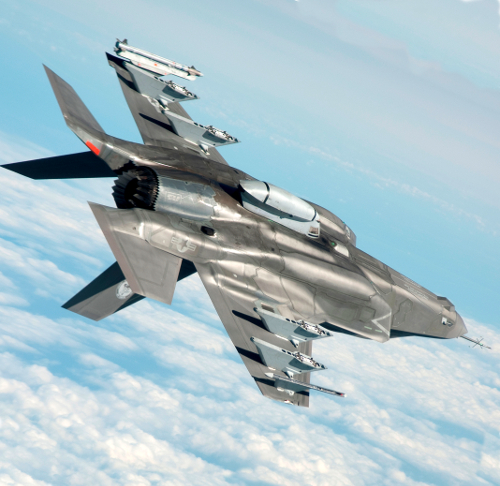New jet issues arise
 US officials say there are not enough spare parts for the F-35 Joint Strike Fighter.
US officials say there are not enough spare parts for the F-35 Joint Strike Fighter.
Diana Maurer from the US Government Accountability Office (GAO) there is a chronic shortage of spare parts for international buyers of the Joint Strike Fighter.
Australia is one of eight international partners in the Joint Strike Fighter program, having ordered at least 72 of the F-35 fighters at a cost of approximately $124 million each.
“The bottom line is; far too often the F-35 is on the tarmac because there aren't enough spare parts,” Ms Maurer said.
Her department has completed a report that finds the F-35As are not “mission-capable” 48 per cent of the time, leaving them unable to fly a single mission.
The US Department of Defence currently owns all spare parts, and despite having spent billions of dollars on them, it does not know how many it has or where they are, the report says.
There is a plan to create a network of repair facilities, but it is running eight years behind schedule and will not be ready until after the F-35 enters service.
The parts-distribution network for international partners like Australia also has not been established.
While up to 1,000 F-35s could enter service around the world in coming years, Ms Maurer said it would be seriously hobbled if the infrastructure to support the aircraft is not ready.
“It's really important for the F-35 program to address all the numerous problems we found with the global support network that is supposed to underline the program,” she said.
Last year, James Mattis, US defence secretary at the time, ordered that the F-35 must be capable of flying at least one tasked mission at least 80 per cent of the time by September this year.
“I think that's a stretch, in my opinion, I think that probably won't happen,” said Mike Sullivan, Director of Defence Weapon System Acquisitions at the GAO.
He said to many new ideas were crammed last minute into the aircraft.
“The manufacturing floor got very chaotic and so you wind up with aircraft coming off the line that are just not very up to snuff when it comes to reliability and parts and things like that.”
For countries including Australia, which have poured billions into the F-35 program, the only way out is to keep paying.
“From an Australian perspective, we need to make sure the sustainment of that platform is effective,” said Dr Malcolm Davis, from the Australia Strategic Policy Institute, a government-funded think tank.
“We have to work with the Americans to get these problems fixed as soon as possible.”
“We can't turn back,” said Keith Joiner, an aeronautical engineer and former Director-General of Test and Evaluation for the Australian Defence Force.
“Putting deficiencies into the public domain isn't helpful, this is now a matter of national security.”
The F-35 has been under development for over 20 years, and has been hit by cyber attacks that exposed critical designs, meaning it probably will not be operationally capable for very long.
Experts say adversaries have had an extremely long time to develop countermeasures to the plane, rendering it fairly useless by the late 2030s.
Australia has four F-35s at its Williamtown airbase near Newcastle. It is still waiting on around 68 more.








 Print
Print